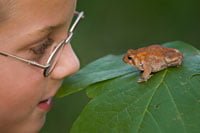Free shipping on USA orders over $129!

Many people equate living books with the Charlotte Mason method. And that’s well and good. Living books are a big part of her approach, as we’ve discussed during recent posts.
But a Charlotte Mason education is not based just on books; it is also based on “things.”
Charlotte believed that up close and personal hands-on experiences were also necessary for children to really learn. She specifically mentioned five “things” that we need to make sure we include in our children’s curriculum.
- Natural Obstacles
We should provide natural obstacles to challenge our children physically. Charlotte encouraged us to get our children physically active with “climbing, swimming, walking, etc.”
- Material to Work In
Handicrafts play an important role in helping our children form relations with the world around them. We need to give them opportunities to work with “wood, leather, clay, etc.”
- Natural Objects in situ
Notice how that word “situ” looks like “situation.” Charlotte made sure that the children had regular time outdoors to observe objects of nature, “birds, plants, streams, stones, etc.,” in their natural environment, or situation. Nature study is an important aspect of a Charlotte Mason education.
“For the first five or six years of his life, everything, especially everything in action, is an object of intelligent curiosity to the child––the street or the field is a panorama of delight, the shepherd’s dog, the baker’s cart, the man with the barrow, are full of vivid interest. He has a thousand questions to ask, he wants to know about everything; he has, in fact, an inordinate appetite for knowledge. We soon cure all that: we occupy him with books instead of things; we evoke other desires in place of the desire to know; and we succeed in bringing up the unobservant man (and more unobservant woman) who discerns no difference between an elm, a poplar and a lime tree, and misses very much of the joy of living” (Vol. 2, pp. 181, 182).
- Objects of Art
Children in Charlotte’s schools were given opportunity to appreciate and express art. They had picture study and drawing lessons, time to experiment with mixing paints and sketching with charcoal, encouragement to draw both what they imagined and what they saw. Let’s give our children the same.
- Scientific Apparatus
Charlotte listed specifically the stethoscope, thermometer, microscope, and magnifying glass. While she encouraged us to use these apparatus, she also explained that we should be careful to use them to confirm or expand on an idea, not to replace the emotion-touching, imagination-stirring idea itself.
So as you make plans for next week, next month, or next year, be sure to include both books and things. These types of hands-on learning experiences will add variety and enjoyment to your days, and they will play a vital role in helping your child form those relations that lead to real knowledge.
